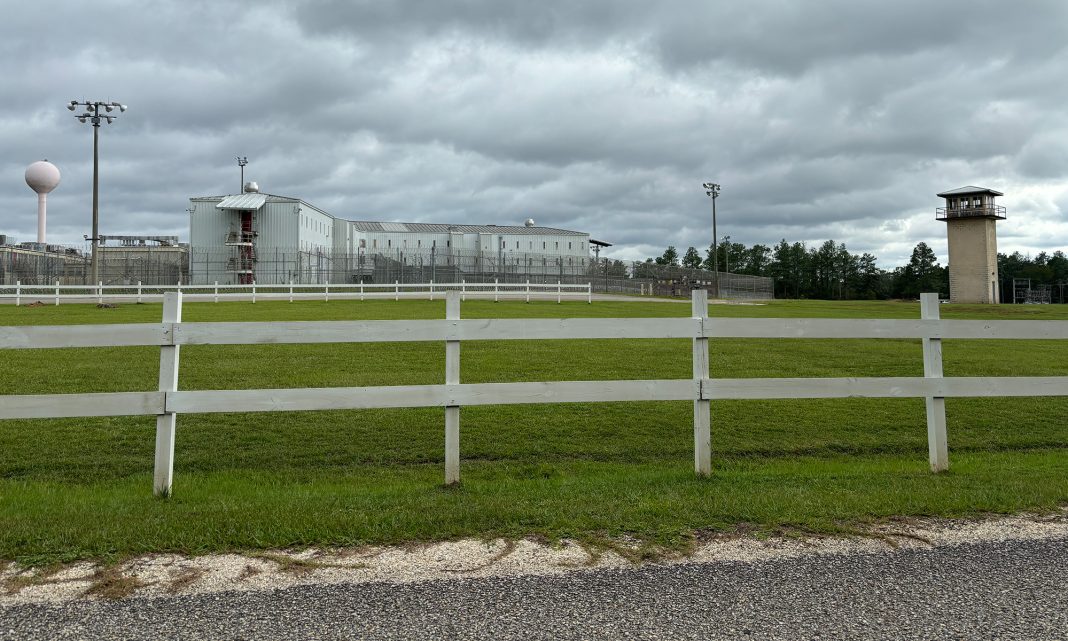In the dim confines of Holman Correctional Facility, Alan Miller faced the culmination of years spent on death row. As he awaited his execution by nitrogen hypoxia, a method touted as humane yet shrouded in controversy, Miller grappled with the haunting specter of his past and the uncertain fate that lay ahead.
For six months leading up to his execution, Miller was confined to his cell, a period marked by an unsettling routine that had become common for death row inmates in Alabama. The state’s decision to employ nitrogen gas as an execution method had raised eyebrows, and Miller, acutely aware of the risks, conducted his own research. He was particularly troubled by the possibility of suffering from decompression sickness, a condition he had learned about from a Discovery Channel program on scuba diving. Despite his inquiries about using tissues to block his ears during the execution, prison guards dismissed his concerns, leaving him to confront the unknown alone.
Miller, now 59, had witnessed the state’s first nitrogen execution just months earlier, where Kenneth Smith had displayed violent, seizure-like movements, contradicting assurances from officials that death would be swift and painless. The son of Smith’s victim, who had been present during the execution, described the experience as something he never wanted to witness again. This unsettling precedent loomed large in Miller’s mind as he prepared for his own fate.
Despite the state’s reassurances, Miller remained skeptical. He had previously survived an execution attempt when prison officials failed to establish an IV line for lethal drugs, a harrowing experience that left him alive but deeply affected. As he sat in the visitation room, he expressed a desire for a quick and peaceful death, a stark contrast to the violent imagery he had witnessed. “I don’t want to be a vegetable,” he insisted, highlighting the psychological toll of his impending execution.
Miller’s past was marked by trauma and mental illness, a history that painted a complex picture of the man facing execution. His family had a long history of mental health issues, and he had endured severe abuse from his father, who suffered from paranoia and inflicted physical and psychological torment. This background contributed to a troubled psyche, and by the time of the murders that led to his conviction, Miller was exhibiting signs of mental distress, including dissociative episodes.
On the day of his execution, Miller’s family and legal team gathered to support him, engaging in light conversation to distract from the grim reality ahead. As they were escorted to the witness room, a message painted on an overhang to “Have a great day!” felt like a cruel joke against the backdrop of the day’s events.
When the execution commenced, the reality of nitrogen hypoxia unfolded in a manner that contradicted the state’s claims of a humane process. As the gas flowed, Miller’s body reacted violently, thrashing against the restraints. His spiritual adviser, John Muench, who witnessed the execution, described it as a scene of profound suffering. “We don’t see people jerking around like that while they’re dying normally,” he remarked, emphasizing the anguish etched on Miller’s face.
The scientific community has raised serious concerns about the use of nitrogen for executions. Experts like Dr. Gail Van Norman, an anesthesiology professor, noted that reactions similar to Miller’s are predictable based on studies of animals subjected to nitrogen suffocation. The method, which replaces oxygen with nitrogen, can lead to a terrifying experience of suffocation, characterized by gasping and thrashing as the body struggles for air. This stark reality contradicts the narrative of a painless death that proponents of nitrogen hypoxia have promoted.
Alabama’s adoption of nitrogen hypoxia as an execution method was born out of a desire to find a more reliable alternative to lethal injection amid drug shortages and legal challenges. However, the lack of scientific research on its effects on humans raises ethical questions about its implementation. Despite assurances from state officials that the method is humane, the evidence suggests otherwise.
As the execution unfolded, Miller’s family and witnesses were left grappling with the horror of what they observed. The aftermath of the execution left lingering questions about the morality and efficacy of nitrogen hypoxia as a method of capital punishment. Critics argue that the state’s insistence on this method, despite its troubling implications, reflects a broader disregard for the humanity of those on death row.
In the wake of Miller’s execution, Alabama officials expressed their intent to assist other states in adopting nitrogen hypoxia, further entrenching a controversial practice that has yet to be thoroughly vetted for its ethical implications. As the nation grapples with the complexities of capital punishment, the case of Alan Miller serves as a poignant reminder of the human cost of such policies, urging a reevaluation of the methods employed in the name of justice.


